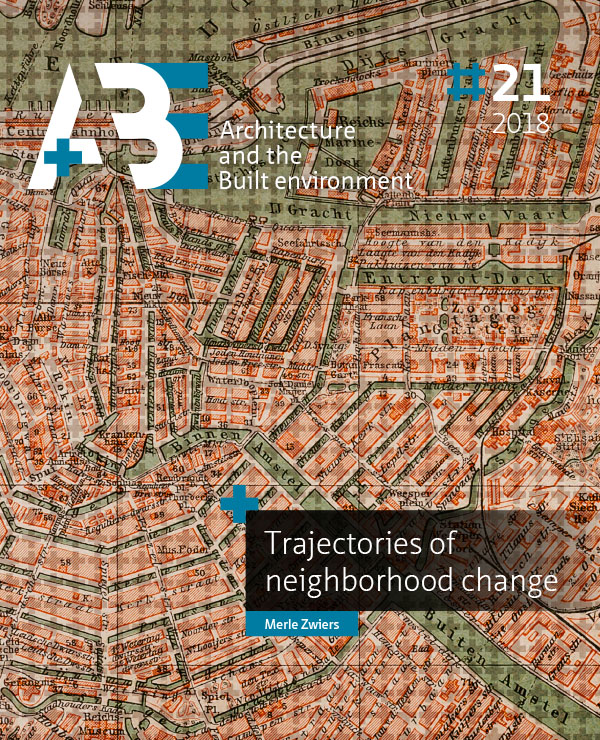Intergenerational continuity of ethnic segregation: Socio-spatial assimilation of third generation immigrants in the Netherlands
DOI:
https://doi.org/10.7480/abe.2018.21.3529Abstract
Ethnic segregation continues to be a persistent feature of Western European cities (e.g. Jivraj & Khan, 2015; Lymperopoulou & Finney, 2017; Zwiers et al., 2018a). Ethnic segregation is often understood as the result of a lack of socio-spatial assimilation and is thought to have hampering effects on social integration, mobility, and interethnic contact, thereby posing a threat to inclusive diverse societies (Kaplan & Douzet, 2011; Monkkonen & Zhang, 2013; Van Ham & Tammaru 2016). In 2016, the four largest ethnic groups in the Netherlands – Moroccans, Turks, Surinamese, and Antilleans – comprised 7.6% of the total population (Statistics Netherlands, 2017). This relatively small share of the population tends to be overrepresented in particular (deprived) neighborhoods where they comprise half of the population (Zwiers et al., 2018a). Patterns of ethnic segregation of these four ethnic groups have remained relatively stable in the Netherlands over the past few decades (Zwiers et al., 2018a). Ethnic segregation is often viewed as the result of a process of assimilation that develops over the course of generations (Peach, 1996). As the first generation tends to concentrate in particular neighborhoods after recent immigration, the second generation generally shows more spatial dispersal and movement to more mixed neighborhoods (e.g. Massey, 1985). Indeed, many studies confirm that second generation immigrants show more spatial mobility into non-concentration neighborhoods as a result of socioeconomic assimilation (e.g. Bolt & Van Kempen, 2010a; South et al., 2005). However, these findings only apply to a small share of immigrants, as most immigrants continue to lag behind in educational and labor market outcomes compared to the native population (Huijnk & Andriessen, 2016; Statistics Netherlands, 2016b). It has been argued that this lack of socioeconomic assimilation inhibits their socio-spatial mobility, explaining the persistence of ethnic concentration neighborhoods in the Netherlands (Bolt & Van Kempen 2010a).
In the Dutch context, this idea of gradual social and economic assimilation over the course of generations is implicitly captured in the official definition of ethnicity (Kooiman et al., 2012). In the Netherlands, an individual is considered to be an ethnic minority when he/she has at least one parent abroad, distinguishing between those born abroad themselves (first generation) and those born in the Netherlands (second generation) (Statistics Netherlands, 2016a). According to this definition, third generation immigrants who are born in the Netherlands and whose parents are both born in the Netherlands, but with one or more grandparents from an immigrant background, are defined as native Dutch (Statistics Netherlands, 2016c). Behind this definition of ethnic group membership lies the assumption that third generation immigrants are socially, economically, and culturally integrated into Dutch society. According to the spatial assimilation hypothesis, this would be reflected in spatial integration as well, meaning that the third generation would predominantly live in non-concentration and more ethnically mixed neighborhoods, leading to decreasing levels of ethnic segregation. However, to date, there are no studies that have analyzed the socio-spatial behavior and outcomes of third generation immigrants in the Netherlands.
The official definition of ethnicity also has important empirical consequences. Because third generation individuals are not included as minority group members in the definition of ethnicity, they tend to ‘disappear’ in official statistics (cf. Kesler & Schwartzman, 2015). As a result, it is unclear how the residential mobility behavior of third generation immigrants will affect ethnic segregation. When second generation immigrants have children, the share of immigrants in a neighborhood will decrease as these children are officially defined as native Dutch. In addition, when third generation immigrants move into ethnic concentration neighborhoods, statistically, this would be interpreted as an inflow native Dutch, decreasing the share of immigrants in a neighborhood. Third generation immigrants might, however, still be very different from the native Dutch population in cultural, social, and economic terms. Neighborhoods with high shares of third generation immigrants might be considered as ethnically diverse - or even ethnic concentration - neighborhoods by other residents, thereby affecting the neighborhood preferences and/or residential mobility behavior of other ethnic groups (cf. Schelling, 1971). Processes of ‘White flight’ or ‘White avoidance’ in response to the residential mobility behavior of third generation immigrants might have additional effects on ethnic segregation (Crowder & South, 2008; South & Crowder, 1998).
The main aim of the present study is to explore the extent to which the definition of ethnicity influences conclusions about ethnic segregation by focusing on the residential patterns of third generation immigrants in the 31 largest Dutch cities between 1999 and 2013. The analysis consists of two parts: first, aggregate statistics of the share of third generation immigrants in different types of neighborhoods are analyzed which shows that ethnic concentration neighborhoods will most likely see the largest increase in the share of third generation immigrants over time. Second, I focused on third generation home-leavers and their spatial mobility behavior which contributes to our understanding of intergenerational processes of socio-spatial assimilation. My findings show that third generation immigrants continue to be overrepresented in ethnic concentration neighborhoods which raises questions about the assumed unidirectional process of socio-spatial assimilation. Ethnic segregation seems to be the continuing trend among third generation immigrants. The official definition of ethnicity in the Netherlands, which assumes socio-spatial assimilation, seems to mask the persistent intergenerational continuity of ethnic segregation.

